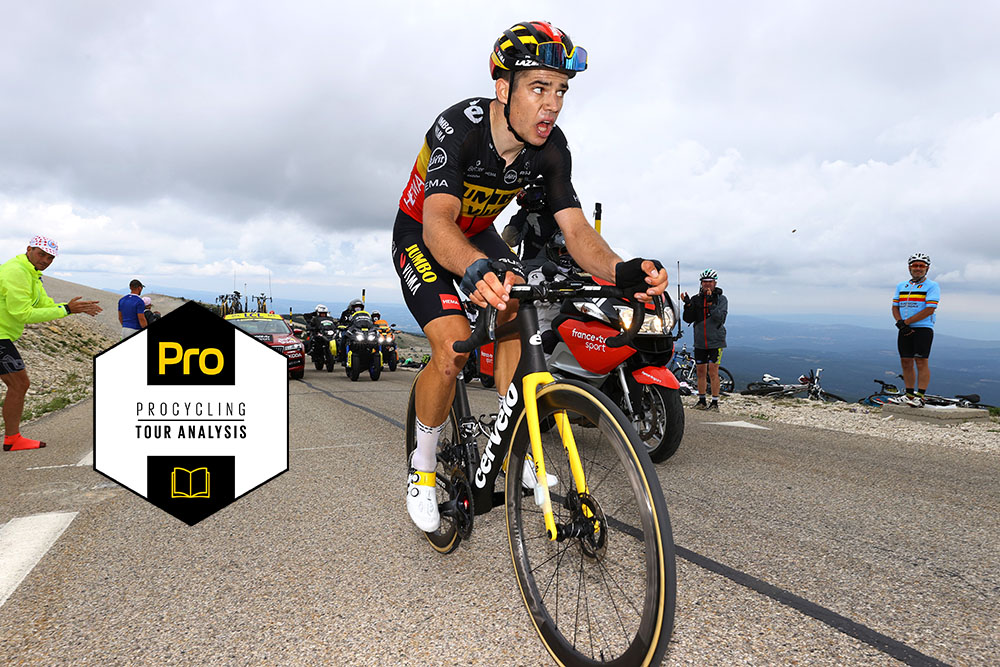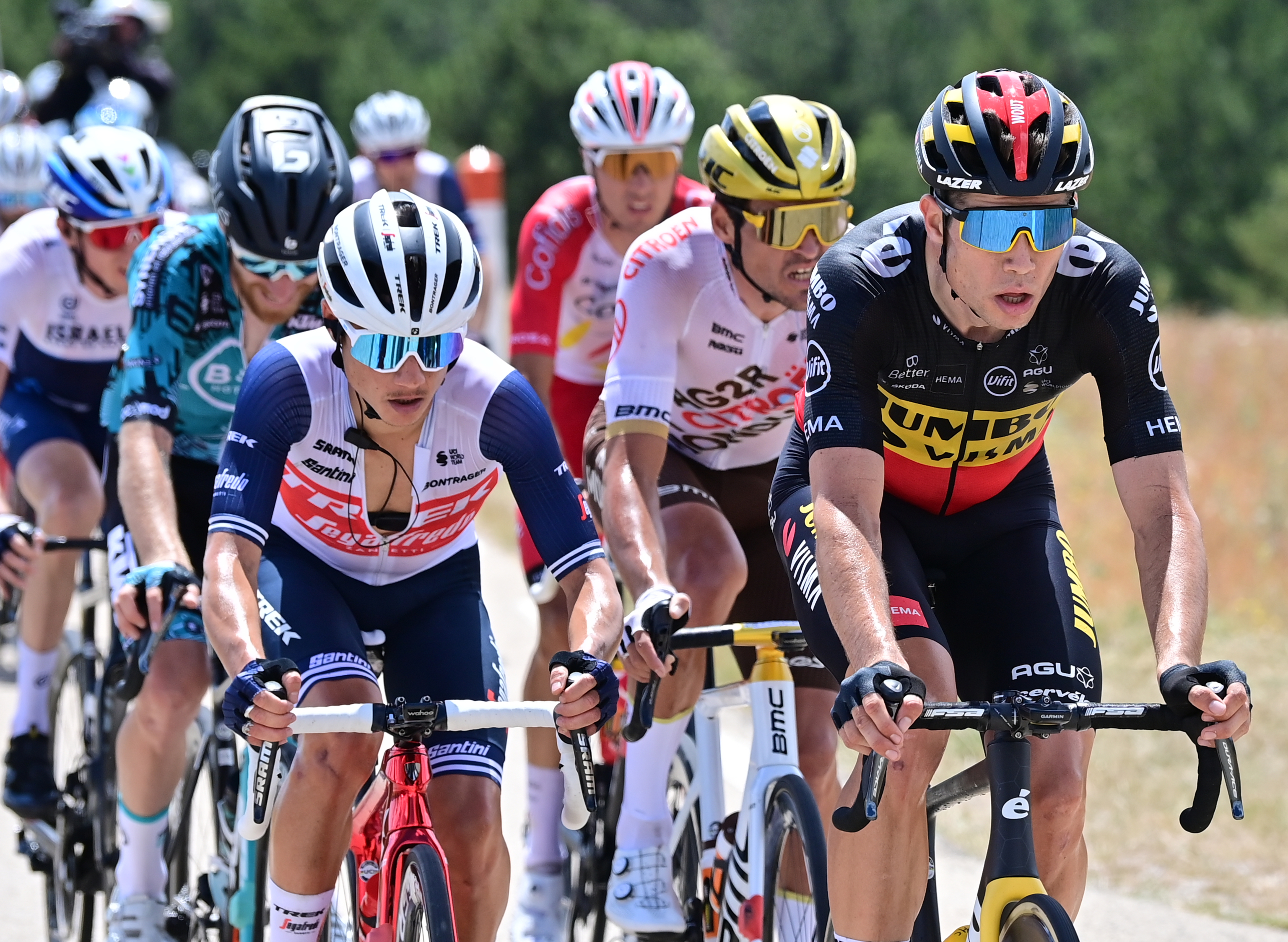Tour de France stage 11 analysis: Van Aert masters the Ventoux breakaway
Wout van Aert's navigation of the breakaway made him the winner of the Tour's showpiece stage

Twenty four hours before Wout van Aert won stage 11 of the Tour de France, which featured a historic double ascent of Mont Ventoux, the Belgian road champion finished runner-up in the bunch sprint in Valence behind Mark Cavendish. There’s always something in the air when the Tour de France climbs Ventoux, and a 78kg heavyweight classics rider winning the showpiece mountain stage of 2021, was another unique chapter in the history of the Tour’s most mythical climb. But then Van Aert’s victory was as much about his tactical navigation of the breakaway during the day as it was his climbing strength when they hit the slopes of Ventoux.
The key to a breakaway winning at the Tour de France comes down to a multitude of factors. The route has to be right, the combination and number of riders in the group has to be right and the motivations of the riders there has to be right. With different aims and ambitions, the politics of the break can often be its downfall before it’s even begun.
It was Van Aert’s classics rival Julian Alaphilippe who did the dogged work in establishing the breakaway, from which the stage win was eventually taken. The world champion powered off the front of the peloton after just 18km, after a series of other moves had come to nothing. Nairo Quintana, decked head to toe in the polka dots, might not have seemed a likely ally, but the slight Colombian darted after him and the two engaged in a two-up time trial hovering half a minute out front for a handful of kilometres.
A breakaway of two, on a stage this hard, had little chance of survival to the finish and Alaphilippe knew that. He dropped Quintana on the first categorised climb, and spent a further 10km alone riding off the front before a group of five riders joined him. The reinforcements included strong climbers such as Jakob Fuglsang and Dan Martin, but therein lay Alaphilippe’s first problem. Barely 30km of the stay had passed and he’d already spent a significant amount of energy first getting away from the peloton, and then staying out there alone.
Van Aert said in his post-race winner’s interview that he asked his team the night before if he could be Jumbo-Visma’s designated rider in the breakaway and indeed, he was visibly active at the front, and not just because his Belgian tricolore jersey stands out. Often the first hurdle of success from a breakaway is knowing the right move to follow, and Van Aert’s first step to victory was his patience in choosing wisely.

With the break and the peloton fracturing on the second category-4 climb, the Côte de Gordes, Alaphilippe, Martin, Anthony Perez, and Pierre Rolland remained out front, but it was another 20km before Van Aert accelerated away, in a six-rider move alongside Greg Van Avermaet and Kenny Elissonde. After five kilometres Van Aert’s group swept up the next break on the road, making the Alaphilippe group of four out front and the Van Aert group of 13 chasers behind. Van Aert was already able to significantly share the workload.
It took until the first ascent of Ventoux, with 100km to go, for the two breaks to merge, after which it wasn’t long before Alaphilippe spent more energy to split things to pieces again. This time, Van Aert followed, taking Trek-Segafredo duo Kenny Elissonde and Julien Bernard, Luke Durbridge, Xandro Meurisse and Perez with him, before Bauke Mollema joined over the top of Ventoux to make it three Trek riders in the group of eight.
Get The Leadout Newsletter
The latest race content, interviews, features, reviews and expert buying guides, direct to your inbox!
Trek’s numerical advantage clearly gave them the upper hand. On paper, they also had the two strongest pure climbers of the eight, in Elissonde and Mollema. Bernard was burned up as the workhorse taking the group to the foot of the second ascent of Ventoux, from which Elissonde accelerated off the front. So far, so good as far as their plans went.
The only problem for Trek was that, on a climb as hard and as long as the second time up Ventoux, at 15.7km from Bédoin, and with the first 8km barely dipping below 8.5 per cent gradients, tactics don’t count as much as simply having the legs. And while the team played every card right in getting to this position, they didn’t account for Van Aert being able to climb as well as he did. When Van Aert set off after Elissonde, Alaphilippe, as expected, cracked - no surprise due to all the work he’d put in earlier - while Mollema, who finished 10th on Ventoux the last time the Tour came here in 2016, similarly couldn’t keep up.
Van Aert proved his versatility at the Tour a year ago, switching from winning sprints and racing in the crosswinds to being a domestique deluxe in the high mountains for Primož Roglič. Still, his 2021 Tour has unfolded very differently to that of a year ago, and with his team hard hit by injuries, and losing their leader, he has since been able to concentrate his efforts more on winning a stage.
A chasm of around 26kg in weight separates Van Aert from Elissonde, and Van Aert has never looked so large next to the little Elissonde as he caught and overtook the Frenchman with 33km to go, giving a whole new meaning to the Giant of Provence. With time trialling one of the many strings to Van Aert’s bow, he knew exactly how to pace himself over the 11km left to the summit, and then flew down the 22km remaining to the finish line.
Van Aert called the win “maybe his best victory ever” and indeed, few would have predicted him triumphing before the stage began. But then again, there’s always something in the air when it comes to Mont Ventoux.
Sophie Hurcom is Procycling magazine's deputy editor.
Procycling magazine: the best writing and photography from inside the world's toughest sport. Pick up your copy now in all good newsagents and supermarkets, or get a Procycling subscription.
Sophie Hurcom is Procycling’s deputy editor. She joined the magazine in 2017, after working at Cycling Weekly where she started on work experience before becoming a sub editor, and then news and features writer. Prior to that, she graduated from City University London with a Masters degree in magazine journalism. Sophie has since reported from races all over the world, including multiple Tours de France, where she was thrown in at the deep end by making her race debut in 2014 on the stage that Chris Froome crashed out on the Roubaix cobbles.